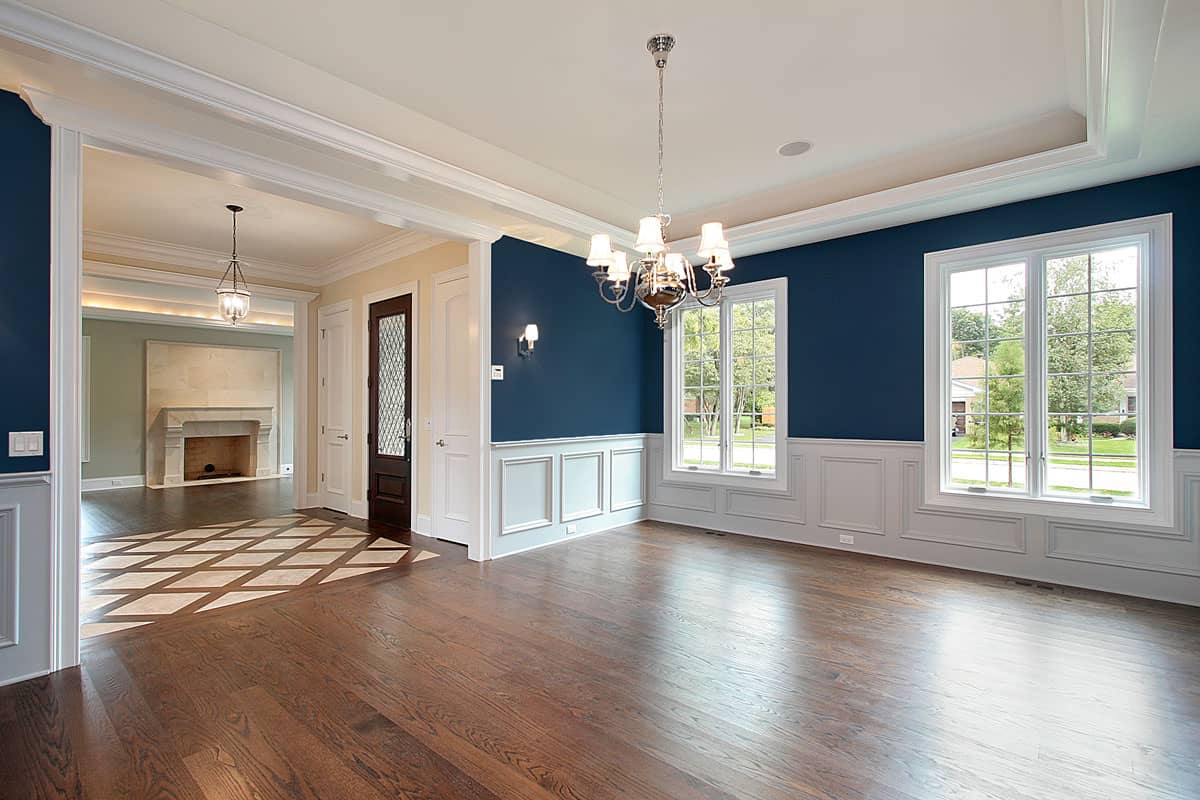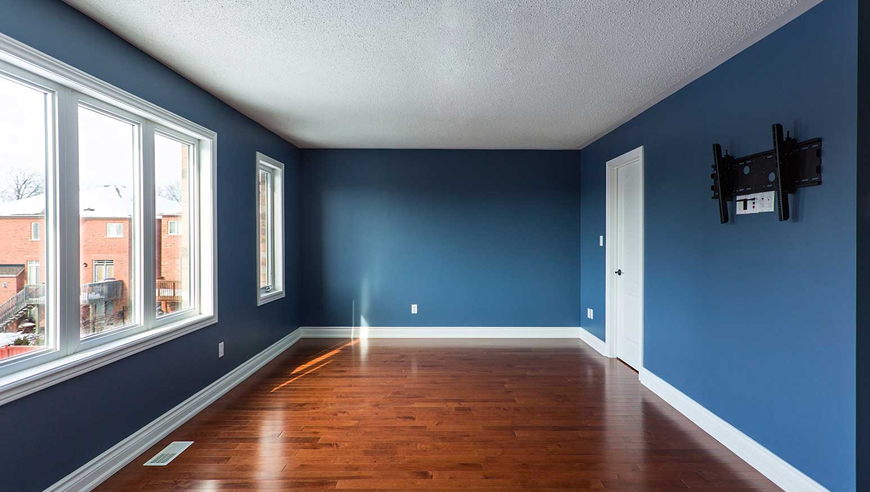High-Quality Lakewood Interior Painting to Enhance the Beauty of Your Space
High-Quality Lakewood Interior Painting to Enhance the Beauty of Your Space
Blog Article
Enhance Your Interior Decoration With Comprehensive Shade Assessment
The integration of shade consultation right into indoor style offers an unique possibility to fine-tune and boost the visual and emotional resonance of an area. By engaging with a skilled shade consultant, you can browse the intricacies of shade option, making certain that your selections not just enhance building features however additionally resonate with personal style and emotional effect.
Advantages of Color Examination

Furthermore, color examination aids in maximizing natural light and maximizing spatial understanding. Lighter hues can make an area appear even more large, while darker tones produce an intimate setting. Cleveland Metro Painting Specialists. This critical application of shade can significantly influence the total atmosphere of any type of interior space
Additionally, professional consultants have a thorough understanding of current patterns and classic classics, making certain that the picked shades will certainly stay appealing in time. This foresight can conserve customers from costly redesigns in the future. Ultimately, shade examination equips clients by giving them with a clear vision and direction, fostering confidence in their layout choices and ultimately causing a more successful and satisfying interior decoration end result.
Understanding Shade Psychology
The relevance of shade psychology in interior layout can not be overstated, as it looks into the psychological and emotional effects that various hues can evoke in people. Shades can influence state of mind, actions, and even performance, making them a crucial consideration in any kind of design job.
As an example, warm colors such as red, orange, and yellow are usually connected with energy and warmth. They can promote sensations of enjoyment and convenience, making them appropriate for social spaces like living spaces or kitchens. Alternatively, cool colors like blue, green, and purple have a tendency to evoke peace and harmony, making them excellent for bed rooms or meditation locations.
Furthermore, making use of neutral tones can create a balanced setting by allowing the bolder shades to stand out without overwhelming the detects. Recognizing these emotional effects allows designers to produce spaces that not only look cosmetically pleasing however also advertise psychological well-being.
Integrating color psychology right into interior decoration entails a thoughtful option of hues tailored to the desired function of each space, eventually boosting the general experience for its passengers. This awareness is important for attaining a practical and harmonious interior environment.
The Shade Wheel Discussed
Comprehending the relationships in between tones is necessary for efficient interior design, and the shade wheel acts as a valuable tool in this procedure. The shade wheel, established by Isaac Newton in the 17th century, illustrates the spectrum of shades arranged in a round format. It comprises main shades-- red, blue, and yellow-- that can not be produced by mixing other colors. Secondary shades, created by combining primaries, consist of green, orange, and purple. Tertiary colors result from blending a primary and an additional color, causing hues such as red-orange and blue-green.
The color wheel helps designers grasp the relationships in between shades, including corresponding, similar, and triadic schemes. Complementary shades, located opposite each various other on the wheel, develop dynamic contrasts that can stimulate a space. Similar colors, situated beside one another, offer a unified and natural appearance. Triadic schemes make use of 3 evenly spaced shades, using equilibrium and aesthetic interest.
Using the color wheel in interior decoration not just boosts visual allure however also stimulates particular emotions and environments, making it an essential recommendation for shade assessment. Comprehending these relationships ultimately encourages developers to develop areas that are both practical and aesthetically exciting.
Selecting the Right Scheme
A well-chosen color scheme can link a space, enhance its features, and stimulate preferred emotions. Various rooms offer varied functions and need schemes that reflect their desired usage; for instance, peaceful colors such as soft blues or eco-friendlies function well in bedrooms, promoting relaxation.
Next, take into consideration the natural light offered. Light can drastically change exactly how colors show up, so it is necessary to assess the area at different times of the day. In addition, consider existing architectural elements and furnishings. An unified palette needs more to enhance these functions, producing a cohesive appearance throughout the area.
When picking colors, use the 60-30-10 policy, which suggests that 60% of the room must be a dominant shade, 30% an additional color, and 10% an accent color. This proportion guarantees equilibrium and aesthetic interest (Cleveland Metro Painting Specialists). Sample colors on the wall surfaces before committing, as this allows you to see just how the colors interact with one an additional and the overall setting they create in your interior style task.
Dealing With a Shade Consultant

When dealing with a color expert, the process commonly begins with a preliminary consultation. During this meeting, you'll discuss your vision, choices, and the existing components in your space. The professional will evaluate your requirements and may recommend particular color palettes that straighten with your objectives.
After developing an instructions, the consultant will certainly offer samples and visual aids to help you envision the suggested color pattern. This action is critical, as colors can show up differently under varying lighting hop over to here problems.
Furthermore, a color consultant can assist you in selecting complementary home furnishings, artwork, and accessories to integrate with your chosen palette. By teaming up carefully, you can accomplish a polished visual that boosts your interiors and develops a welcoming ambience. Ultimately, the experience of a shade specialist can dramatically improve the total effect of your layout project.
Conclusion
In recap, extensive color consultation serves as a crucial tool for improving interior style. By leveraging professional expertise of color psychology and spatial dynamics, a customized color palette can be created to stimulate specific feelings and produce a harmonious setting.
By engaging with a skilled shade consultant, you can navigate the intricacies of shade option, ensuring that your selections not just complement architectural attributes but also resonate with individual style and emotional impact. It comprises main colors-- red, blue, and yellow-- that can not be produced by mixing various other colors.The shade wheel aids designers realize the relationships between shades, including complementary, similar, and triadic systems.When selecting colors, use the learn the facts here now 60-30-10 guideline, which recommends that 60% of the area ought to be a leading shade, 30% a secondary color, and 10% an accent shade. By leveraging specialist knowledge of color psychology and spatial characteristics, a customized color scheme can be created to stimulate particular emotions and produce an unified setting.
Report this page